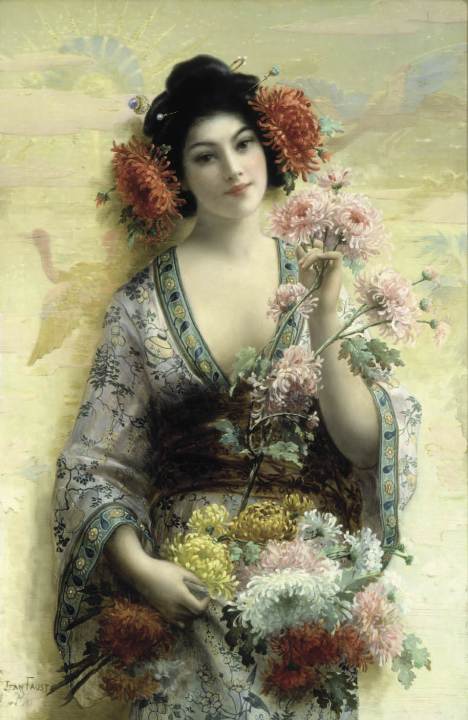Born in Japan, growing up in America in the Sixties, Yoko Kawaguchi was perplexed by the persistence of what she felt to be an anachronistic image of Japanese culture: the geisha. ‘That mincing, simpering personification of female subservience to the male infuriated me,’ she writes in the introduction to Butterfly’s Sisters.
Her book explores the Western portrayal of Japanese women with emphasis on the geisha, from the mid-19th century to the present day, comparing perception with reality, misunderstandings compounded by prejudice. She details the geisha’s appearance from head to toe (tortoiseshell hairpin to wooden-soled geta), and the life, from the market in virginity to retirement and/or violent death, encompassing history, myth, literature and art.
The geisha emerged as a discrete class within the ranks of prostitutes and courtesans, from the brothel quarters and tea-houses. One translation of the word is ‘performing artist’, and there are similarities with the hetaerae of ancient Greece.

Get Britain's best politics newsletters
Register to get The Spectator's insight and opinion straight to your inbox. You can then read two free articles each week.
Already a subscriber? Log in







Comments
Join the debate for just $5 for 3 months
Be part of the conversation with other Spectator readers by getting your first three months for $5.
UNLOCK ACCESS Just $5 for 3 monthsAlready a subscriber? Log in